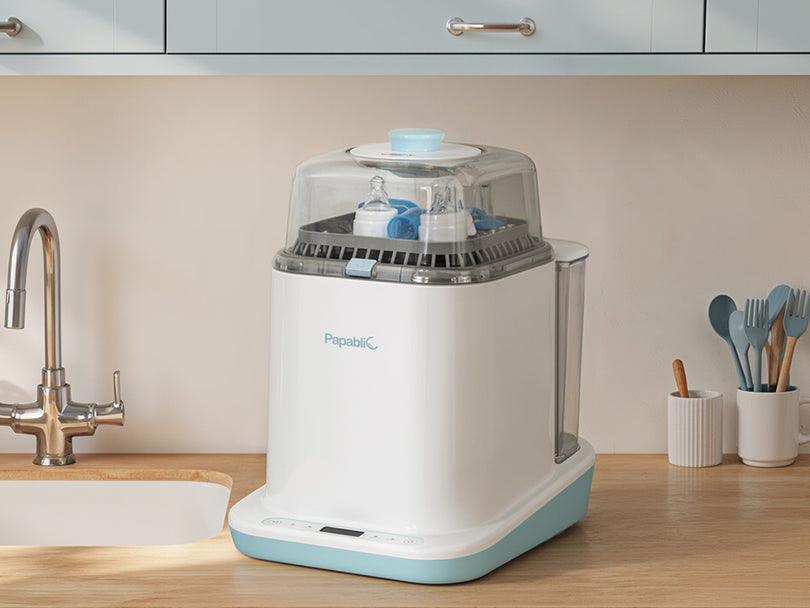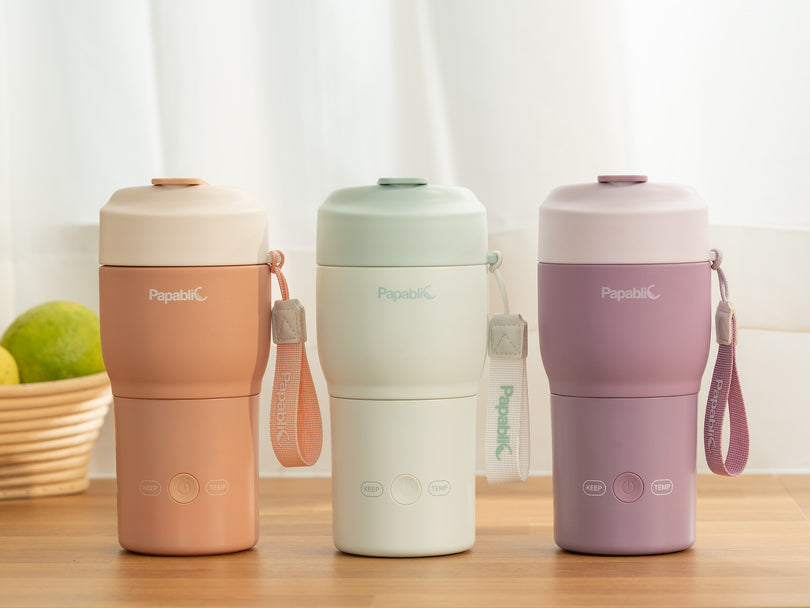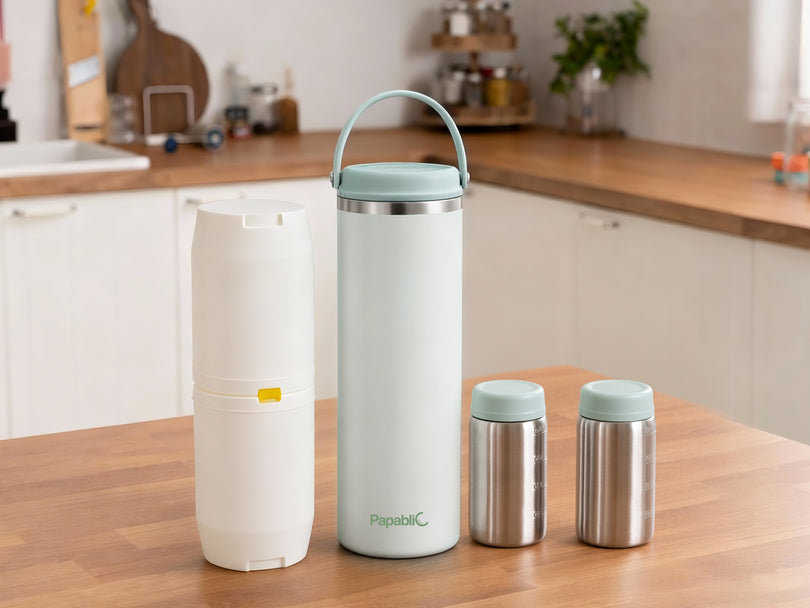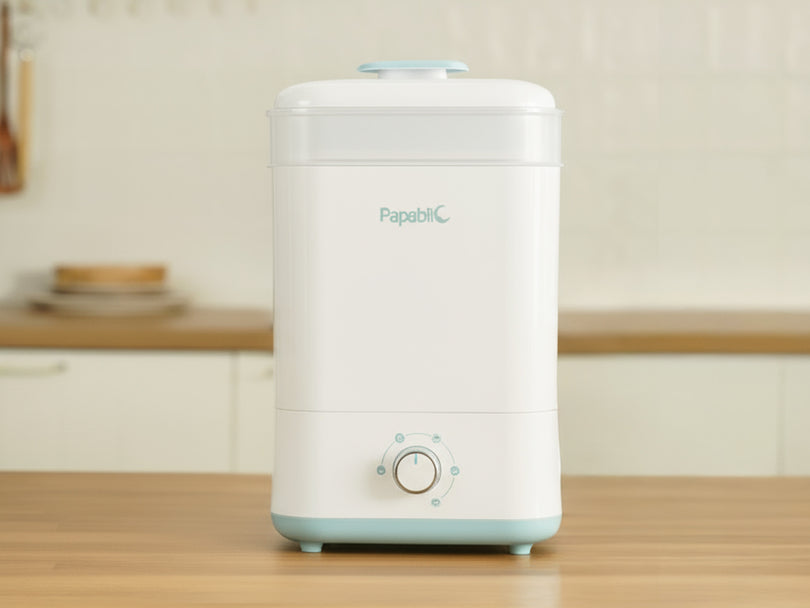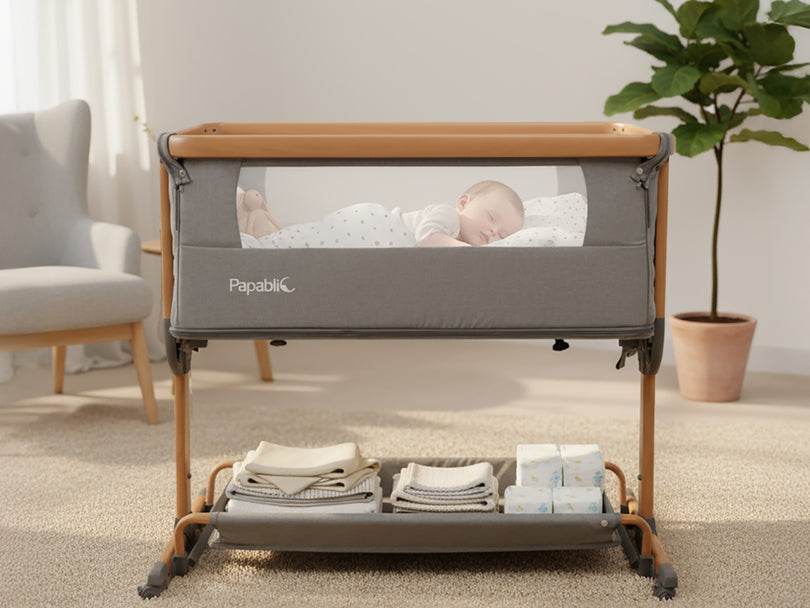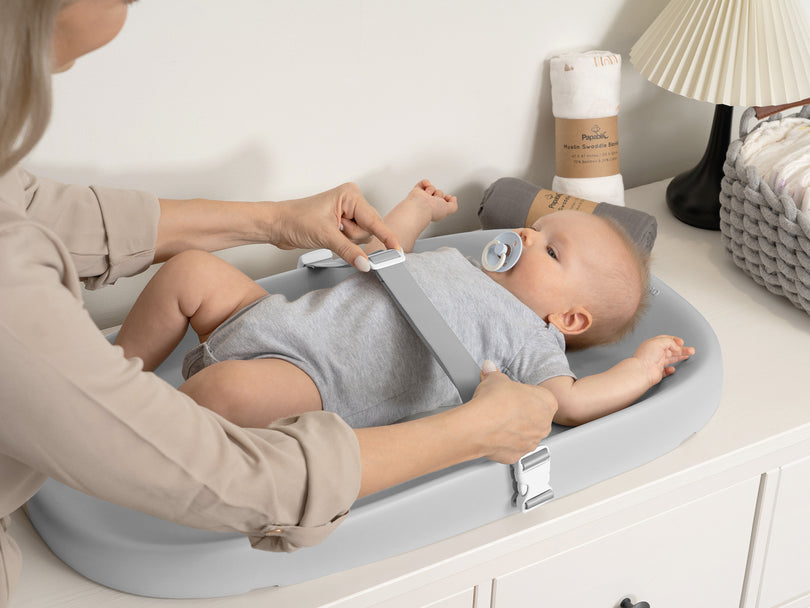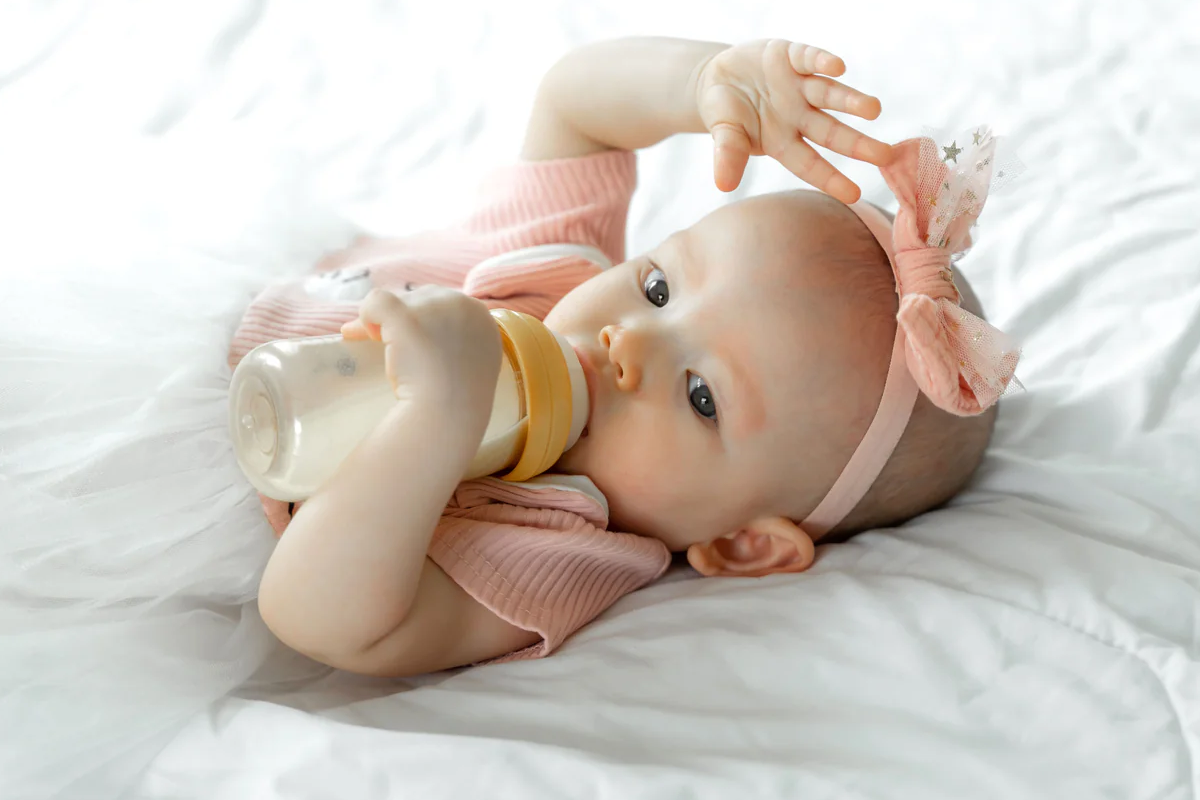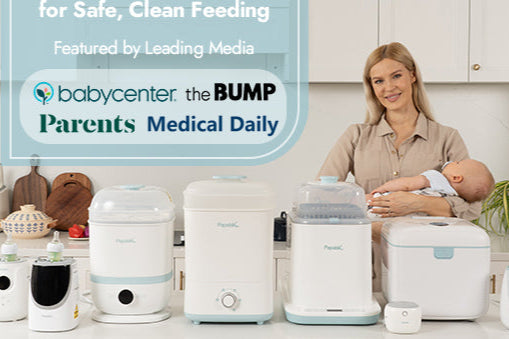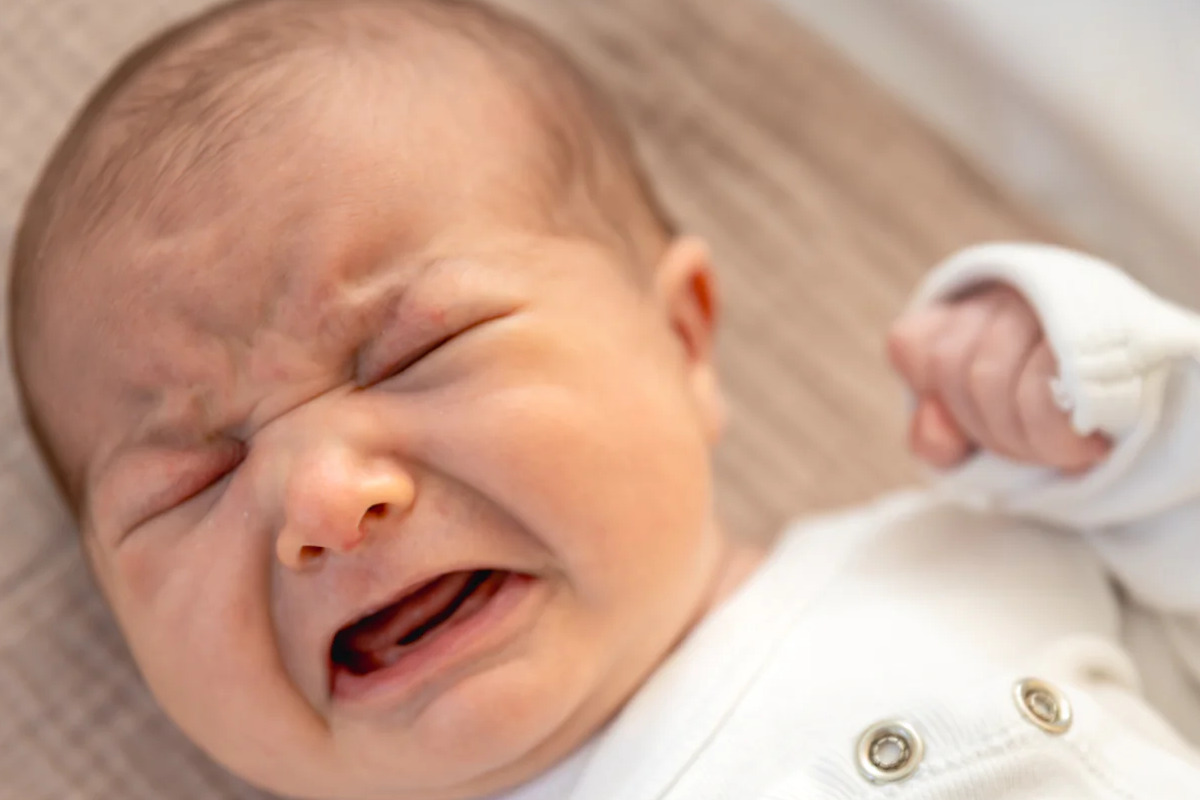Ensuring that your baby's feeding equipment is clean and safe is one of the most important aspects of infant care. Newborns and young infants have developing immune systems, making them more susceptible to infections caused by bacteria, viruses, and other harmful pathogens.
Properly cleaning and sterilizing baby bottles helps protect your baby from illnesses and ensures that every feeding is as safe as possible. This article will explain why cleaning and sterilizing baby bottles is necessary, when and how often to do it, and the best methods to keep bottles hygienic.
Why Is It Necessary to Sterilize and Clean Baby Bottles?
Baby bottles come into direct contact with milk, which creates an environment for bacteria to thrive. If bottles are not cleaned and sterilized properly, these bacteria can lead to digestive issues, infections, and even serious illnesses.

Key Reasons to Clean and Sterilize Baby Bottles:
Protects Against Bacteria and Germs – Milk residue left in bottles can breed harmful bacteria, increasing the risk of infections.
Prevents Digestive Issues – Contaminated bottles can lead to stomach discomfort, diarrhea, and vomiting.
Ensures Bottle Safety – New bottles may have chemicals or residues from manufacturing that should be removed before first use.
Supports a Developing Immune System – Babies are more vulnerable to infections, and proper hygiene reduces health risks.
Many health organizations, including the CDC, recommend cleaning and sterilizing infant feeding items to reduce the risk of infection, as babies have developing immune systems. Proper hygiene helps minimize health risks by removing milk residue and eliminating harmful bacteria or pathogens through sterilization. Regular cleaning removes visible dirt and milk residue, while sterilization eliminates any remaining bacteria or pathogens, ensuring your baby’s feeding equipment is completely safe.
When to Clean and Sterilize Baby Bottles
Knowing when to clean and sterilize baby bottles is just as important as knowing how.
Key Times to Clean and Sterilize:
Before First Use – Always sterilize brand-new bottles before using them to remove any factory residue or contaminants.
After Each Feeding – Cleaning bottles immediately after use prevents milk from drying and bacteria from growing.
If Your Baby Has Been Sick – Sterilizing bottles after an illness helps eliminate lingering germs and prevents reinfection.
When Using Stored Bottles – If bottles have been sitting unused for a while, sterilizing them before use ensures they are clean and safe.
If the Bottle Falls on the Floor – Even if it looks clean, bacteria from the floor can transfer to the bottle and into your baby’s mouth.
Maintaining a consistent cleaning and sterilization routine helps ensure every feeding is as safe as possible.
How Often to Sterilize Baby Bottles
The frequency of sterilization depends on your baby’s age, feeding habits, and individual needs.
General Guidelines for Sterilization Frequency:
Newborns (0-3 months) – Daily sterilization is recommended because newborns have weaker immune systems.
3+ Months – Sterilizing less frequently (a few times a week) is acceptable if bottles are cleaned properly after each use.
Formula-Fed Babies – Since formula can leave more residue, sterilizing daily or every other day is a good practice.
Breastfed Babies – If bottles are only used occasionally for pumped milk, sterilizing after each use may not be necessary.
Premature or Immuno compromised Babies – More frequent sterilization is recommended to reduce infection risks.
While sterilization is crucial in the early months, regular cleaning becomes more important as your baby grows and builds immunity.
How to Sterilize Baby Bottles
There are several methods for sterilizing baby bottles, each with its own benefits.
1. Steam Sterilization (Electric or Microwave)
Steam sterilization is one of the most effective and convenient ways to sterilize baby bottles. The Papablic Bottle Washer and Sterilizer simplifies this process by combining washing, sterilizing, and drying into one easy step.
How to use steam sterilization:
Place bottles inside an electric steam sterilizer or a microwave steam sterilizer.
Add the recommended amount of water.
Run the sterilization cycle (typically 5-10 minutes).
Let bottles air dry before use.

2. Boiling Water Method
A simple way to sterilize bottles at home, keep in mind that it can be tricky since certain bottle parts, like nipples and valves, can melt if exposed to high heat for too long.
How to sterilize bottles with boiling water:
Fill a large pot with water and bring it to a rolling boil.
Submerge bottles completely and boil for at least 5 minutes.
Use tongs to remove the bottles and place them on a clean drying rack.
3. Cold Water Sterilization (Sterilizing Tablets or Solution)
This method is useful when traveling or when other sterilization methods are unavailable.
How to use cold water sterilization:
Fill a container with water and dissolve a sterilizing tablet or solution.
Submerge bottles in the solution for at least 30 minutes.
Remove bottles and allow them to air dry—no need to rinse.
4. UV Sterilization
Some modern sterilizers use UV light to kill bacteria without heat or chemicals. This is a fast, effective option but requires purchasing a specialized device.
How to Clean Baby Bottles
Cleaning is the first and most important step before sterilization.
Step-by-Step Guide to Cleaning Baby Bottles:
Disassemble the Bottle – Separate all parts, including the nipple, ring, and bottle itself.
Rinse Immediately – Rinse bottles with warm water right after feeding to prevent milk from drying.
Use a Bottle Brush and Mild Soap – Wash bottles thoroughly using a baby bottle brush and mild dish soap.
Rinse Well – Ensure all soap residue is completely washed away.
Air Dry on a Clean Rack – Place bottles on a clean drying rack to air dry completely.
For busy parents, the Papablic Bottle Washer and Sterilizer streamlines this process by washing, sterilizing, and drying bottles with minimal effort.
What Is the Best Way to Clean and Sterilize Baby Bottles?
The most effective way to keep baby bottles hygienic is by combining thorough washing with a reliable sterilization method.
For convenience: The Papablic Bottle Washer and Sterilizer is an all-in-one system that washes, sterilizes, and dries bottles effortlessly.
For a budget-friendly option: Boiling water sterilization is a great alternative.
For travel: Cold water sterilization is a practical and portable choice.
Choosing a method that fits your lifestyle ensures that your baby’s bottles remain safe and clean.
A Convenient All-in-One Solution: The Papablic Bottle Washer and Sterilizer
If you're still handwashing your baby bottles and pump parts, you'll easily find yourself spending 1-2 hours per day on bottle brushing, and the bottles might still come out with milk residues. The 4-in-1 Papablic Bottle Washer and Sterilizer is a baby bottle care system designed for washing, sterilizing, drying and storing bottles and other accessories. It eliminates the need and time to finish multiple steps to clean bottles. For busy parents, especially pumping moms or families with multiple kids, they will fall in love with this product and never go back to handwashing again. It'll save you a significant amount of time to spend with your family or to take care of yourself. This 4-in-1 system is designed to wash, sterilize, and dry bottles in a single cycle, eliminating the need for multiple steps and saving busy parents valuable time. With its spacious capacity, it can hold up to 8 bottles, along with pacifiers, pump parts, and other feeding accessories. The powerful 360-degree steam sterilization deeply cleans by eliminating 99.9% of bacteria and germs, ensuring that every bottle is thoroughly sanitized.

Unlike traditional sterilization methods that leave bottles damp, the built-in hot air drying function removes moisture completely, preventing mold and bacteria growth. The user-friendly design includes an easy-to-use control panel, allowing parents to choose between different cycles, including sterilizing, drying, or a combination of both. Whether you’re preparing multiple bottles a day or just want a more efficient cleaning routine, the Papablic Bottle Washer and Sterilizer provides a safe, thorough, and effortless solution to keep your baby’s feeding equipment hygienic.
The Importance of Bottle Cleaning for Breastfed Babies
Even if your baby is breastfed, cleaning bottles used for expressed breast milk is just as crucial as for formula-fed babies. The milk can still harbor bacteria, particularly if stored improperly or left at room temperature for too long. It’s essential to clean and sterilize breast milk storage containers and bottles every time they’re used to prevent contamination.
How to Safely Store Baby Bottles After Cleaning
After bottles are cleaned and sterilized, storing them properly is important to maintain their hygiene. Be sure to store clean bottles in a dry, clean place to prevent dust, germs, or bacteria from contaminating them. Avoid covering them until they’re completely dry to allow air circulation and prevent moisture from encouraging bacteria growth.
Signs It’s Time to Replace Baby Bottles
Even with regular cleaning and sterilization, baby bottles do not last forever. Over time, repeated cleaning, sterilization, and use can cause bottles to degrade. It’s important to replace bottles when they show signs of wear and tear, such as cracks, discoloration, or scratches, as these can harbor bacteria even with thorough cleaning.
The Role of Bottle Accessories in Hygiene
In addition to bottles themselves, other accessories like nipples, bottle caps, and bottle rings must be cleaned and sterilized properly. Many of these items are small and have intricate parts where milk residue can accumulate, so they need to be cleaned thoroughly. Use a bottle brush specifically designed for cleaning these items, ensuring that every nook and cranny is scrubbed. Consider checking the manufacturer’s instructions for specific cleaning and sterilization advice for each accessory.
FAQ
Is it necessary to sterilize baby bottles?
Yes, especially for newborns. Sterilizing helps kill bacteria and prevent infections, which is crucial for a baby’s developing immune system.
Should you sterilize baby bottles after every use?
It is not necessary to sterilize after every use once your baby is past the newborn stage. However, bottles should be cleaned after each feeding and sterilized regularly.
Is it okay to wash baby bottles with soap?
Yes, as long as you use a mild, fragrance-free dish soap and thoroughly rinse the bottles to remove all residue.
Conclusion
Cleaning and sterilizing baby bottles is an essential part of infant care. Regular cleaning removes milk residue, while sterilization ensures that harmful bacteria are eliminated. Whether using boiling water, steam, or sterilizing solutions, keeping bottles clean protects your baby’s health.
For a hassle-free solution, the Papablic Bottle Washer and Sterilizer provides an all-in-one system to clean, sterilize, and dry bottles effortlessly.
By following these guidelines, you can ensure that every feeding is safe and hygienic for your baby.

